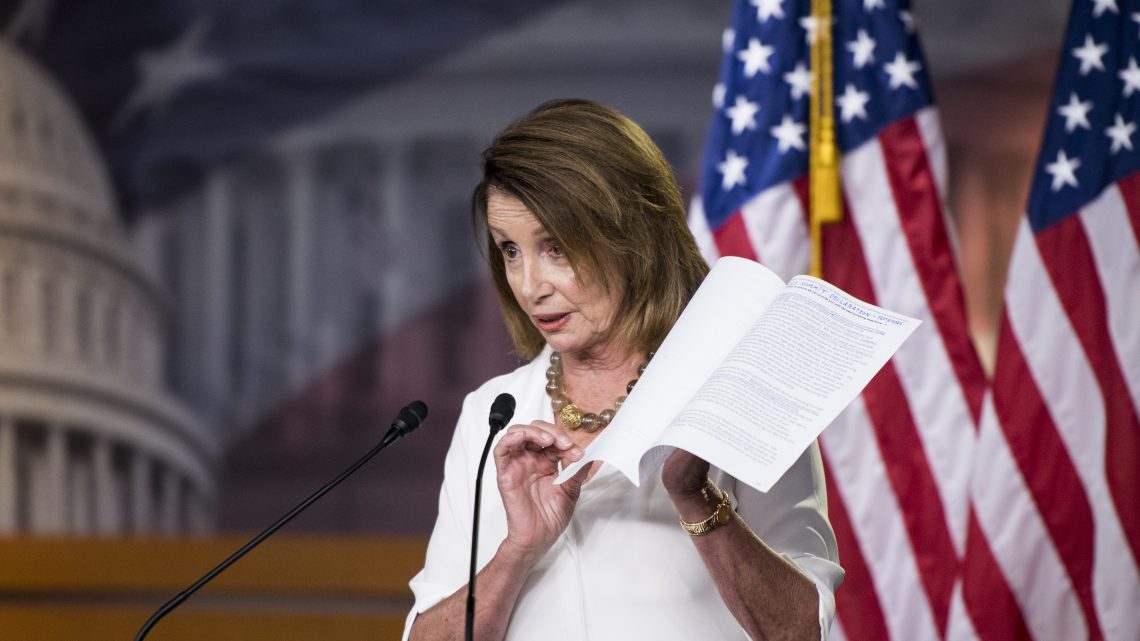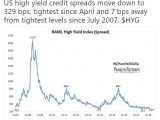
Election Nerds Should Be Obsessing Over the ‘New York Times’ Live Polls
September 19, 2018Welcome back to House Party and our look at the 12 House races that we think will be at the center of the fight for the House.
I’m watching a stream of white dots go across the top of my screen, fistpumping when I see a blue one break it up, and despairing at each red one.
Like anyone following the race for the House of Representatives I’m obsessed with the New York Times’s live polling results. The paper has picked a variety of battleground races to look at and, as high-quality public polling has declined as media budgets have shrank, it’s a wonderful use of resources. High-quality independent polling of House races is rare; most of what we have to go off of is campaign internals.
The public service isn’t just in the end result, but in giving more transparency to the polling process. People can now see just how much effort (and accordingly, expense) goes into polling. And the Times tries to increase readers' statistical literacy by noting that results really don’t mean anything until they get 150 responses, showing how the toplines change over the course of the poll so people can see how more responses mean more reliable results, and disclosing different weighting methods so people can see how the same raw data can lead to divergent results.
A few more things to keep in mind when looking at these results:
- The conventional wisdom is that hitting 50 percent in a poll correlates strongly with victory. Hillary Clinton, for instance, was consistently in the high 40s in many polls but never locked down majority support in the "blue wall" states, especially after the "Comey letter." In hindsight, that was obviously a major problem.
- Similarly, if you’re a Republican incumbent being below 50 percent is a bad sign. The whole idea behind incumbency advantage is that the voters know you well enough to give you a built-in edge heading into the election. If you’re polling in the 40s, that means the edge isn’t holding up.
- Polling Latino voters is tougher for a variety of reasons so small changes in raw data on them can get polls to jump considerably. So in districts with significant Latino population there’s a lot of risk in reading too much into one poll,
- I know it’s fun to start following results as soon as they start flowing in, but you can see from past results how the result at 150 correspondents often diverges from 500.
And the results seem to track with the state of play we outlined in the Initial Decisive Dozen post earlier this month that identified the 12 most important House races. Most of these races are indeed extremely close But there were some notable outcomes that caused a few races to move around in the rankings:
A Race That Republicans May Abandon:
CO-06: Before the Times jumped in, the most recent poll we had here was a Jason Crow internal showing him up only 2 percent before advertising had started. But the Times showed him cracking 50 percent, ten points above incumbent Mike Coffman. Crow isn’t a perfect candidate but the former Army ranger has done a good job of parrying the attacks on his record, and I suspect Republicans would rather not spend $5 million again in 2020 defending Coffman in a seat that continues to trend away from them.
A Race That's Not looking as Important:
WV-03: Richard Ojeda has gotten a fair amount of attention because he’s both progressive and also somewhat sympathetic to Trump, which seems like the combo a Democrat would need to win in bright red West Virginia. But apparently Republicans still have the edge here: The Times showed Ojeda down 8 and his opponent Carol Miller near 50 percent. Now, Ojeda’s a better retail candidate and this race is still essentially a tossup. But the electorate here is volatile enough that it’s hard to say control of the House would really hinge on its outcome.
The Decisive Dozen: Here’s What’s Happening in the Most Important House Races in the Country:
- KY-06: Republican attacks on Amy McGrath, the Democratic candidate and former fighter pilot most famous for her viral campaign ad—seem to be working. Her pilot past might have made her seem above politics, but she’s more liberal than Democrats who’ve won the Sixth before. The Times has her basically neck and neck with the incumbent, the question is whether McGrath’s charisma and message will be enough to overcome conservative fearmongering.
- IL-12: The Times helpfully verified for us that this race is also anyone’s game. Unlike some other Democrats, Brendan Kelly won’t be able to rely on Trump’s unpopularity to coast to victory—the president has a tiny net approval rating here. Thankfully Kelly is running on a populist message of going after big pharma, which should appeal to Obama-Trump voters.
- NY-19: While the Times polls are the most prominent, Monmouth took a look at this race and found Democrat Antonio Delgado leading incumbent John Faso, if not decisively. But Republicans are doubling down on their race-baiting, anti-rap campaign, which they must think is their best bet in a seat that narrowly went for Trump.
- KS-03: Democrat Sharice Davids now says she doesn’t want to abolish ICE (a relatively unpopular movement that has nevertheless been successful in moving the Overton Window) after saying she did want to abolish it in an interview. However, it should be easy to turn any perceived weakness on the issue into a strength now that we’ve found out her opponent, Representative Kevin Yoder, was behind transferring $10 million from FEMA to ICE. Kansas isn’t in the hurricane belt, but those images from Hurricane Florence are easy to turn into 30-second ads.
- IL-06: The Times showed Representative Peter Roskam running ahead of Sean Casten 45-44, but he has plenty of reasons to worry. Trump’s approval in the district is 36 percent and 51 percent of correspondents favored Democratic control of the House. It’s tough to see how someone who’s represented the area for more than a decade gets from 45 percent to 50 percent. Perhaps that’s why Roskam’s trying to compare his opponent to Trump. He’s walking a tough tightrope trying to appeal to moderate Republicans while not alienating Trump supporters.
- CA-45: Katie Porter released an internal poll showing her close to 50 percent against incumbent Mimi Walters, moving her up in the rankings a little bit. Walters’s strategy seems to be calling Porter a socialist, but considering Republicans have been doing that for 80 years without the US turning into Cuba I think the attack is running out of steam
- IA-03: Cindy Axne also had an internal poll showing her ahead, though neither candidate appeared close to 50 percent. Still, Republicans seem to be flailing a bit as they can’t decide whether Axne is a radical environmentalist or a dangerous polluter.
- NJ-07: I agree with Paul Blest (who has contributed to VICE) that the John McCain hagiographies were all a bunch of horsecrap. That said, his post-death halo is working to Democrats’ advantage here, as Malinowski is fighting Republican charges that he lobbied for terrorists by using McCain’s own words praising him for fighting torture.
- VA-02: I’m adding this race to the Decisive Dozen because Democrat Elaine Luria is ahead 51-43 thanks to an absolutely boneheaded scandal enveloping Representative Scott Taylor. Taylor’s campaign evidenctly hoped to get his 2016 Democratic opponent, Shaun Brown, on the ballot as a third-party spoiler to siphon votes from his opponent. The problem is that the campaign forged the signatures she needed to get on the ballot, and now a special prosecutor is looking at who from Taylor’s campaign should be indicted. While nothing will be determined until after the election, Taylor appears to be having a good one.
- CA-10: I keep saying this race will go as the national mood does unless one of the candidates fucks up. So the update this week is that nobody fucked up.
- TX-07: The Times’s polling tracks with the Fletcher internals that we’ve seen before showing that she’s slightly down. But they’ve also noted that in a low-turnout Sun Belt district like this one the results can be pretty volatile. Culberson’s still in the toughest race of his life and he has yet to show he can rise to the challenge of it.
- ME-02: The Times also showed Jared Golden trailing, but with both candidates short of 50 percent. And Golden’s campaign fired back with a poll showing him ahead of Poliquin. Notably this will be the first competitive House race to use ranked choice voting, and with two independent candidates on the ballot that could make the difference here. Ranked-choice voting is difficult to poll because it’s so rare and pollsters still haven’t refined the best way to figure out who third-party voters’ second choices will be—giving us even less of an idea what will happen in November than usual.
Sign up for our newsletter to get the best of VICE delivered to your inbox daily.
Robert Wheel (a pseudonym) is an attorney who lives in New York. He tweets here , and his DMs are open.


